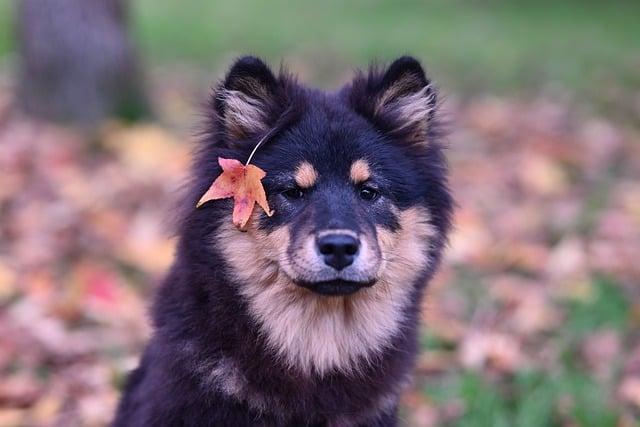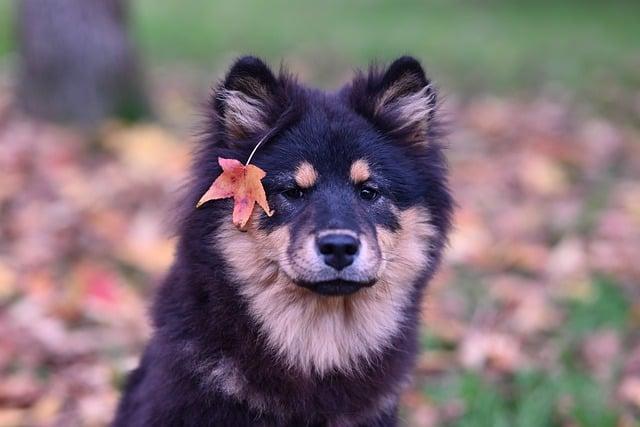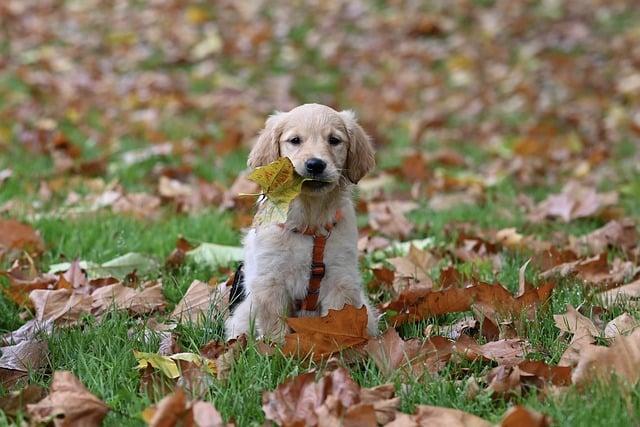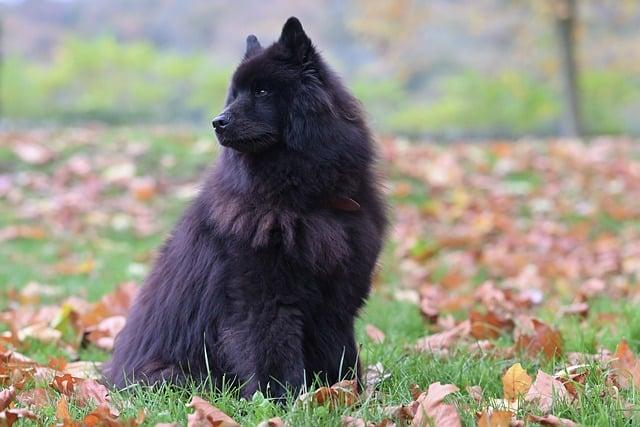Have you ever noticed your dog proudly parading around with a toy in his mouth right after mealtime? This charming behavior is more than just a quirky habit; it’s a testament to your dog’s instincts and emotional well-being. After satisfying his hunger, your furry friend may feel a surge of happiness and security, prompting him to celebrate with his favorite toy. This ritual not only reinforces his bond with you but also showcases his playful nature. Embrace this delightful behavior—it’s a sign of a content and healthy pup!
Contents
- Understanding the Behavioral Significance of Post-Meal Toy Carrying in Dogs
- Exploring the Psychological Comfort and Security Associated with Toys
- Identifying the Role of Play in Your Dogs Overall Well-Being
- Practical Strategies to Enhance Your Dogs Post-Meal Routine and Engagement
- Q&A
Understanding the Behavioral Significance of Post-Meal Toy Carrying in Dogs
Many dog owners have observed their furry companions proudly parading around with a toy in their mouths after finishing a meal. This behavior, while seemingly quirky, is rooted in a complex mix of instinctual drives and emotional responses. Understanding this phenomenon can enhance the bond between you and your pet, as well as provide insights into their mental state.
One of the primary reasons dogs engage in this post-meal ritual is linked to their **natural instincts**. In the wild, canines often consume their food quickly to avoid competition from other predators. After a meal, they may feel the need to secure their territory and possessions, which can manifest as carrying a toy. By doing so, they are not only expressing a sense of ownership but also reinforcing their comfort and security in their environment.
Additionally, this behavior can be a form of **self-soothing**. After eating, dogs may experience a surge of energy or excitement, and carrying a toy can help them channel that energy in a positive way. It serves as a distraction, allowing them to focus on something enjoyable rather than the potential anxiety that can arise from a full stomach. This is particularly common in dogs that may have had a stressful experience around mealtime, such as competition for food or a change in their feeding routine.
the act of carrying a toy post-meal can also be a **social signal**. Dogs are social animals, and they often seek interaction with their human companions. By walking around with a toy, they may be inviting you to engage in play or simply sharing their joy. This behavior can strengthen your relationship, as it encourages bonding through shared activities. Recognizing and responding to this playful invitation can enhance your dog’s emotional well-being and reinforce positive behaviors.
Exploring the Psychological Comfort and Security Associated with Toys
For many dogs, toys serve as more than just playthings; they are a source of psychological comfort and security. After a satisfying meal, a dog may instinctively seek out a toy to carry around, which can be attributed to several factors that highlight the emotional connection between pets and their belongings. This behavior often stems from a deep-seated need for reassurance and stability in their environment.
One significant aspect of this phenomenon is the **sense of ownership** that toys provide. When a dog carries a toy, it is not merely a display of possession; it signifies a form of emotional investment. The act of holding onto a toy can evoke feelings of safety and control, especially after the vulnerability that comes with eating. In a world where they may feel uncertain, having a toy in their mouth can create a comforting routine that reinforces their sense of security.
Additionally, toys often serve as **transitional objects** for dogs, much like a child might cling to a favorite blanket or stuffed animal. These objects can help bridge the gap between different emotional states, providing a familiar anchor during moments of change or excitement. After eating, a dog may feel a surge of energy or excitement, and having a toy to carry can help channel that energy into a more manageable form, reducing anxiety and promoting a sense of calm.
Furthermore, the act of carrying a toy can also be a **social signal** to other dogs and humans. It communicates a state of contentment and readiness to engage in play, reinforcing social bonds and interactions. This behavior can be particularly beneficial in multi-pet households, where establishing a sense of hierarchy and comfort is essential. By walking around with a toy, a dog not only finds personal solace but also invites others into their playful world, fostering a sense of community and belonging.
Identifying the Role of Play in Your Dogs Overall Well-Being
Understanding the significance of play in your dog’s life is essential for fostering a happy and healthy companion. When your dog walks around with a toy in his mouth after eating, it may seem like a quirky behavior, but it actually serves multiple purposes that contribute to his overall well-being. Engaging in playtime not only stimulates your dog’s mind but also reinforces the bond between you and your furry friend.
One of the primary roles of play is to provide mental stimulation. Dogs are naturally curious creatures, and their instinct to explore and engage with their environment is crucial for their cognitive development. By carrying a toy around, your dog is likely satisfying his need for exploration and mental engagement. This behavior can help prevent boredom, which is often a precursor to destructive behaviors. Consider incorporating a variety of toys that challenge your dog’s problem-solving skills to keep his mind sharp.
Physical activity is another vital component of play that directly impacts your dog’s health. When your dog carries a toy, he may be preparing for a game of fetch or simply enjoying the thrill of having something to chase. Regular physical exercise is essential for maintaining a healthy weight, promoting cardiovascular health, and reducing anxiety. By encouraging your dog to play with his toys, you are not only providing him with entertainment but also ensuring he remains active and fit.
Lastly, playtime serves as an important outlet for socialization. Dogs are pack animals, and their interactions with toys can mimic the social behaviors they would exhibit with other dogs. By allowing your dog to engage with his toys, you are fostering his social skills and helping him learn appropriate behaviors. This can be particularly beneficial if you have multiple pets or plan to introduce new ones into your home. Remember, a well-socialized dog is often a happier and more balanced companion.
Practical Strategies to Enhance Your Dogs Post-Meal Routine and Engagement
After your dog finishes their meal, you may notice them wandering around with a toy in their mouth. This behavior can be a delightful quirk, but it also presents an opportunity to enhance their post-meal routine and engagement. By incorporating structured activities, you can channel their energy and curiosity into positive experiences that strengthen your bond.
One effective strategy is to establish a **post-meal playtime**. This can involve interactive games that stimulate both their mind and body. Consider activities such as:
- **Fetch**: A classic game that encourages physical activity.
- **Hide and Seek**: Hide treats or toys around the house for your dog to find.
- **Puzzle Toys**: Engage their problem-solving skills with toys that dispense treats.
Another approach is to create a **calm-down zone** where your dog can relax after eating. This space should be comfortable and inviting, filled with their favorite blankets and toys. Encourage your dog to settle down with a chew toy or a soft plush, reinforcing the idea that post-meal time is also a time for relaxation. This can help reduce any anxiety they may feel after eating and promote a sense of security.
Lastly, consider incorporating **training sessions** into your dog’s post-meal routine. Short, positive reinforcement training can be a great way to keep their minds engaged. Focus on basic commands or tricks, rewarding them with praise or small treats. This not only reinforces good behavior but also provides mental stimulation, making mealtime a more enriching experience overall.
Q&A
-
Why does my dog carry a toy after eating?
Dogs often carry toys after eating as a way to express contentment and security. This behavior can be a sign that your dog feels satisfied and wants to engage in play or simply enjoy their favorite item.
-
Is this behavior normal?
Yes, it is completely normal for dogs to walk around with toys after meals. This behavior is instinctual and can be linked to their natural tendencies to carry food or possessions to a safe place.
-
Should I be concerned about this behavior?
Generally, there is no need for concern. However, if your dog seems overly possessive or anxious about their toys, it may be worth consulting a veterinarian or a professional dog trainer to ensure there are no underlying issues.
-
How can I encourage positive behavior?
To promote healthy habits, engage your dog in interactive play with their toys after meals. This not only reinforces positive behavior but also strengthens your bond and provides mental stimulation.
your dog’s post-meal toy parade is more than just a quirky habit; it’s a blend of instinct, comfort, and playfulness. Embrace this behavior as a sign of their happiness and well-being, and enjoy the joy it brings to your home.

大家好,我是彼得潘,專業的手法身體治療師。我喜歡探索和研究各種主題,並透過與人工智慧的合作分享專業、實用、有趣的文章。我們定期進行人工審核,以確保內容的準確性。如果您發現文章中有任何不準確的地方,請隨時與我們聯繫,我們會及時糾正。您可以透過 [email protected] 與我們聯繫。



